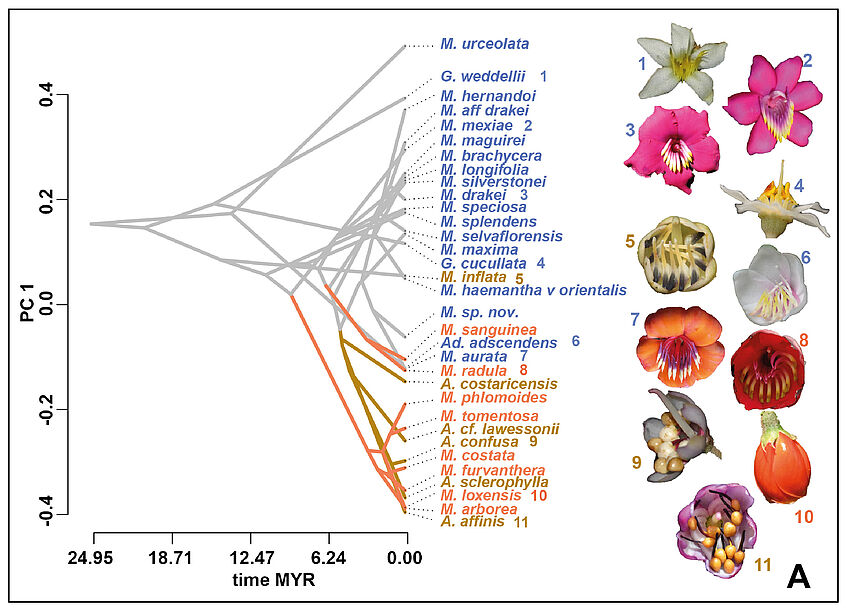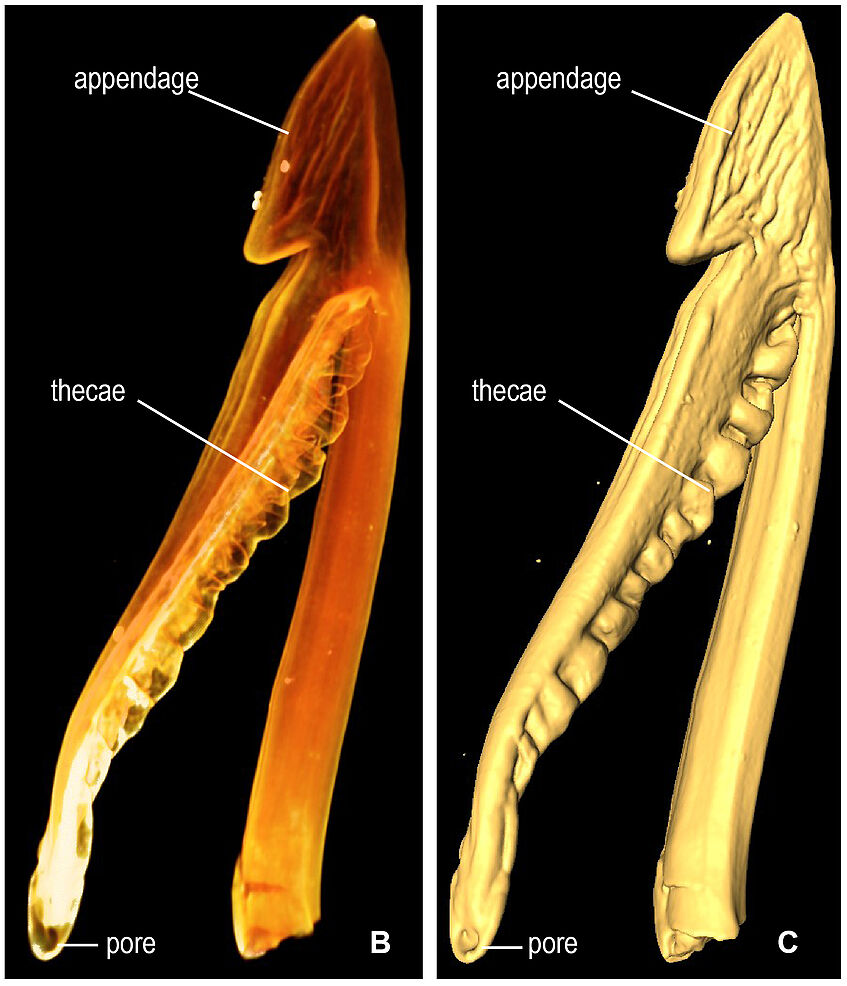Modelling abiotic and biotic drivers of a plant radiation
- Firnberg-Program Project T 1186-B
- 2021/7–
- Project leader: Ass.-Prof. Agnes Dellinger, BSc MSc PhD
- Employee: Benjamin Lazarus, MSc PhD
- Cooperations: Stefan Dullinger
Stacey DeWitt Smith
Laura Lagomarsino
Mario Vallejo-Marín

Merianieae flower shape evolution into three distinct pollination syndromes (bee - blue, mixed vertebrate - salmon, passerine - brown) during the past 25 million years. © Dellinger

HRX-CT scan of a stamen of bee-buzz-pollinated Meriania haemantha (volren - left, isosurface - right). © Dellinger
Plant diversification is driven by a complex interplay of geological, abiotic and biotic factors, and the relative contribution and potential synergistic or counteracting effects of these processes remain poorly understood. In this project, I will address these gaps by quantifying abiotic and biotic niche evolution and the importance of niche shifts and niche conservatism in the diversification of the Neotropical plant group Merianieae (Melastomataceae). I will combine macroevolutionary phylogeographic modelling with ecological niche modelling approaches and functional pollination biological experiments. A particular focus will lie on testing different hypotheses on the biomechanical functioning of buzz-pollinated flowers and their adaptive potential to variable abiotic and biotic conditions.
